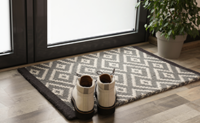
Is it really possible to improve your kitchen’s look for about the cost of a takeout gourmet dinner with the family?
Obviously you’re not going to be able to do anything major, such as replace the cabinets within that budget. But, there are many surprisingly low-budget ways to spruce up the kitchen. Here are a few ideas:
- Do you have old cabinets? You’d be surprised by how much newer they can look simply by replacing the knobs and/or handles. Pick a style that blends, rather than contrasts, with the cabinets.
- Does your sink have a few stains? That’s not unusual! There are special cleaning products available to get out the toughest stains without damaging or scratching the sink’s finish.
- Lighting can have an enormous impact on the look and feel of a space, particularly the kitchen. Experiment with new lighting ideas. Try different bulb wattages. Consider a new lighting fixture that looks good and distributes the light more pleasantly.
- Often you don’t need to upgrade anything – you just need to do a little redecorating. Consider new window coverings. Declutter to create a greater sense of space. Play with design touches such as placing trendy cookbooks on the counter, adding a plant, or putting an attractive fruit basket on the counter.
Sure, depending on your choices, some of these ideas may cost you more than $100. However, any of these low-budget improvements can make your kitchen look considerably more attractive.
You’ll notice the difference. And, if you’re selling, so will buyers.








